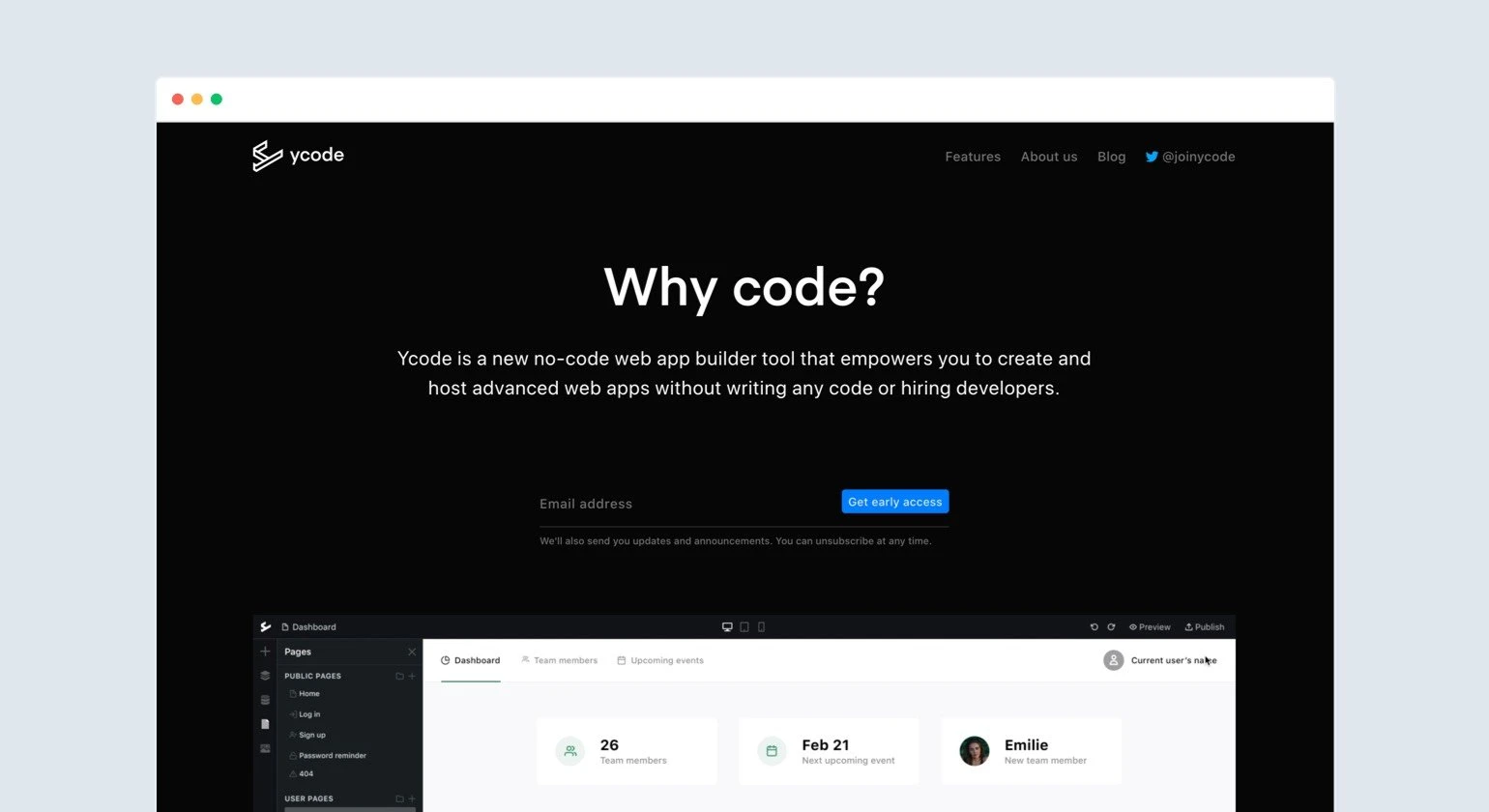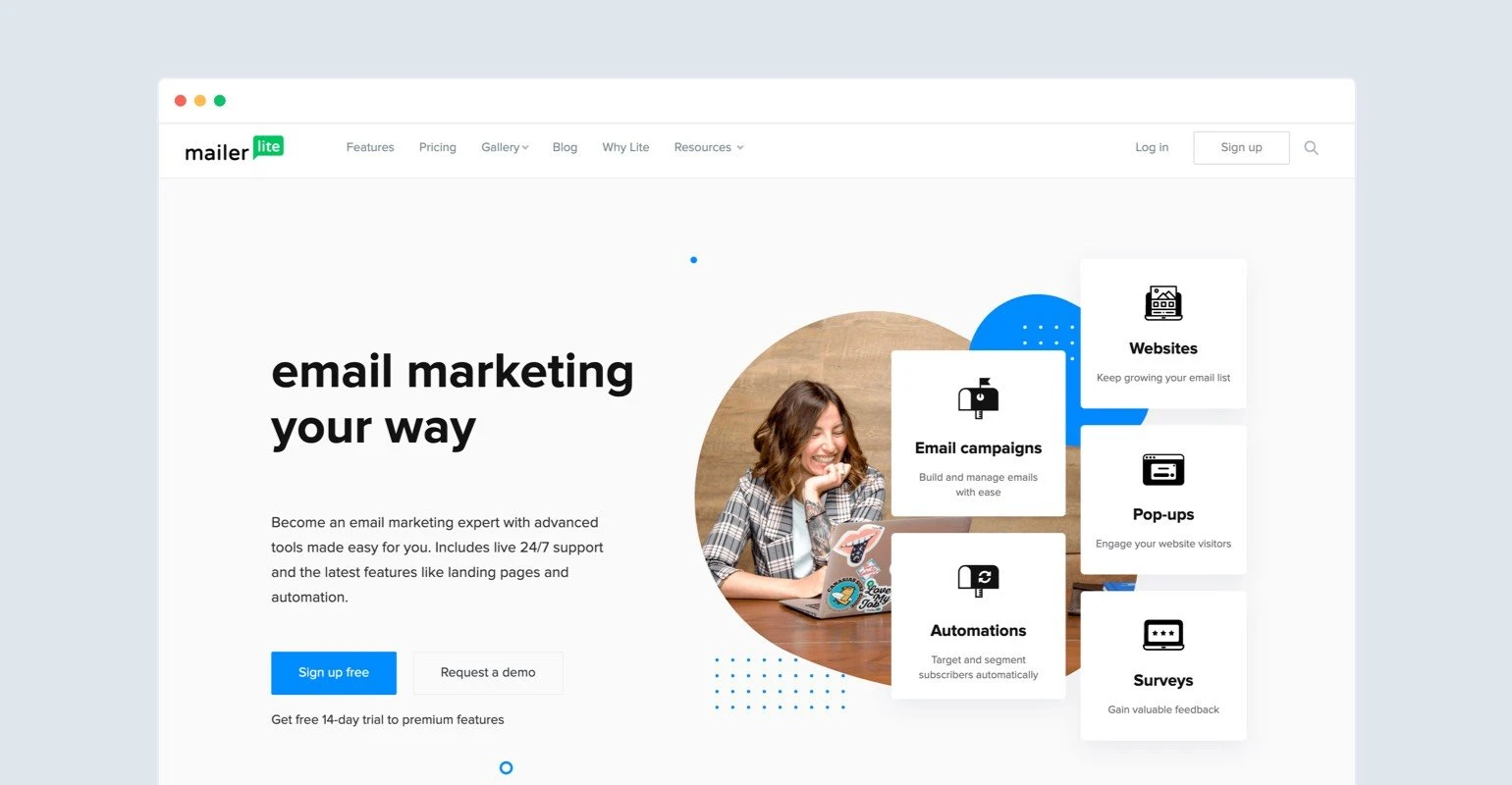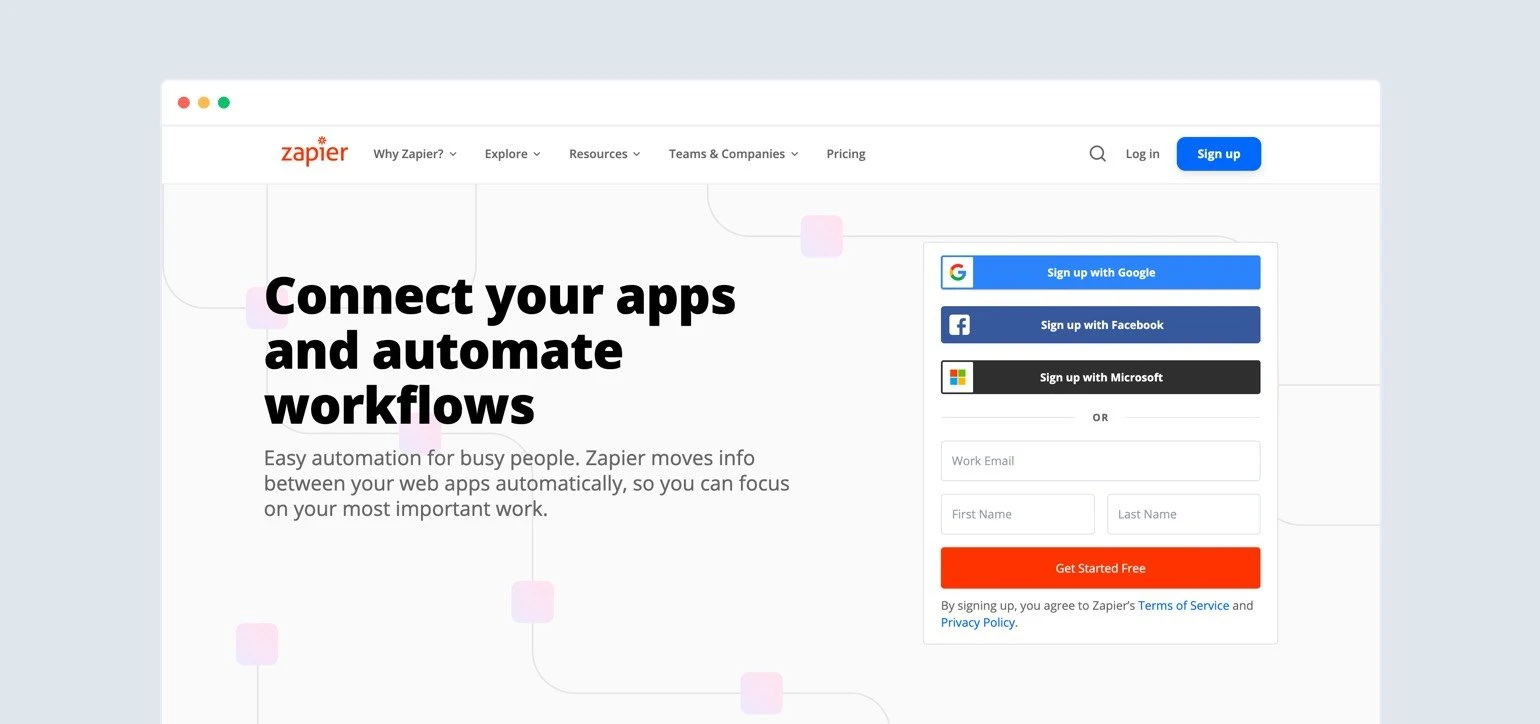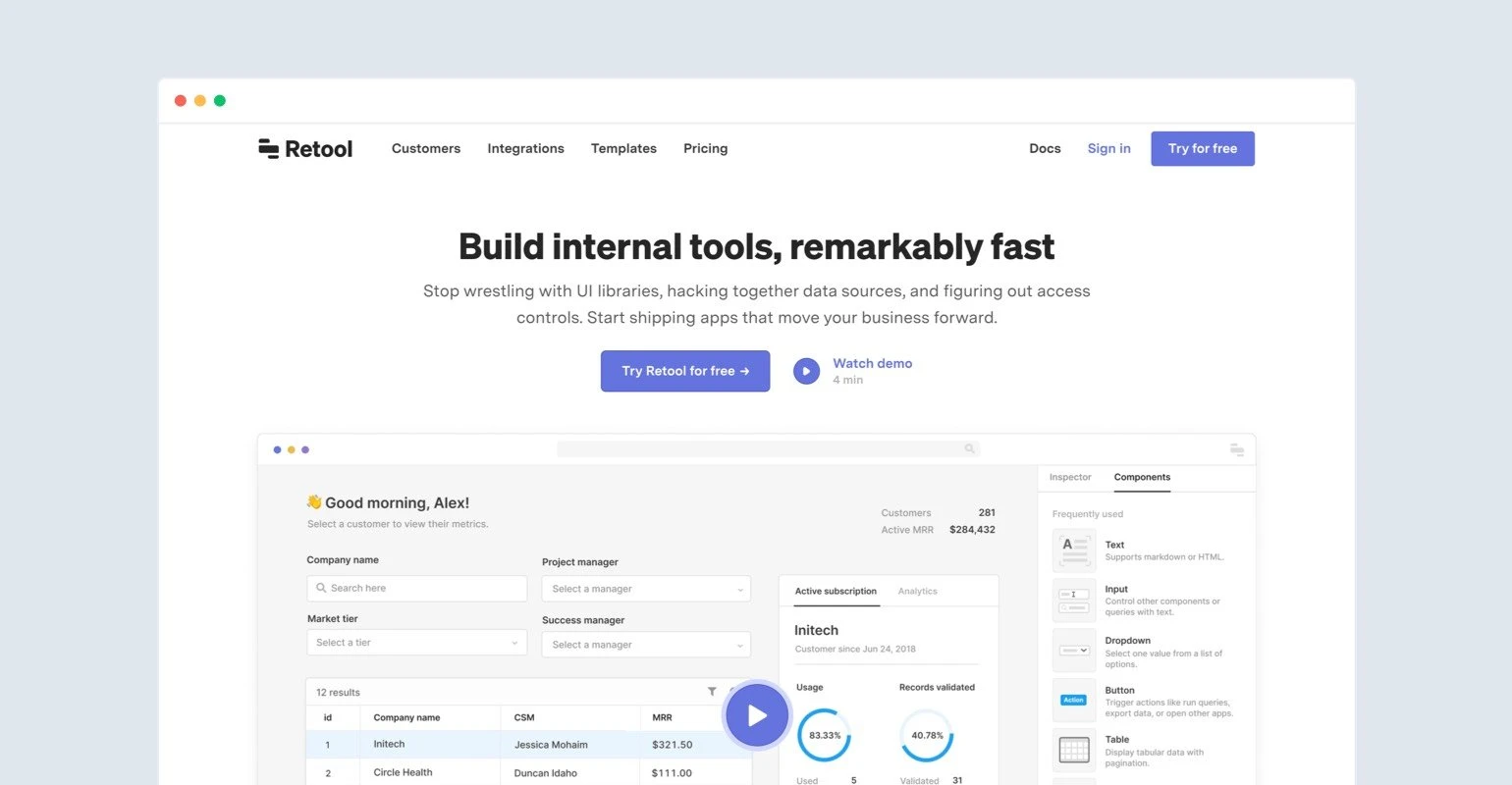The rise of the no-code movement (and which tools to use in 2021)

No-code might ring a bell or be a completely new concept but one thing is for sure: This year you will hear about it a lot. Here’s why.
According to Forrester, the no-code movement will be worth $21.2 billion by 2022 (this number was $3.8 billion in 2017).
Surprising? Not so much. The value of no-code is clear as day. It allows people who have big ideas but no coding skills to start creating immediately. Businesses can cut time, automate processes and alleviate developers. Entrepreneurs can save money and move faster by taking matters into their own hands.
And those are just a few of the benefits behind the rise of no-code.
Read on as we’ll introduce you to the world of coding without actually writing code, and we’ll tell you about five no-code tools that you should consider for your business.
So tell me, what is no-code?
If the topics “coding” and “development” make you want to exit the conversation, then no-code platforms are exactly for you.
The no-code movement is meant for people who know little to nothing about coding but always wanted to build things online, like websites or mobile applications. The movement closes the gap between the ever-growing demand for applications and the limited amount of software developers available.
No-code tools are visual builders (think drag and drop) that help you assemble things without any code application.
Of course, there is coding involved but it’s built-in so you won’t see any of it. While you’re adding and modifying blocks in a simple user interface builder, the code is automatically generated in the background.
Sounds familiar? That’s because MailerLite is also a no-code product. The newsletters you create by dragging and dropping blocks, we turn into functioning code in the back-end. Well… not us (we’re not elves) but our software.
Why is the no-code movement so popular?
Did you ever have a great idea for a website or mobile app? We’ve all had our own Eureka moments, especially in 2020 when we were all bored at home. Some people take action, while most of us quickly toss away the ideas because we don’t know how to write a single line of code.
For all you non-programmers, we’ve got news: No-code is here to shake things up!
No-code removes the challenges of coding and opens up a world of possibilities. That’s why so many no-code tools launched in the past few years. Everything from website and app builders to tools that automate e-commerce processes. These are not just simple models, no-code is rapidly evolving to make it possible to build complex end-to-end products.
As most of these tools are designed intuitively, you can start building as soon as you know how the program works. There’s no need to learn HTML or watch YouTube tutorials of programmers explaining programming languages. Talk about a time-saver!
The no-code movement is on the rise because it’s much faster, cost-effective and conveniently low-barrier to get your idea into the market. For example, designers can quickly build a prototype, startups can create an MVP and non-tech people can launch their own custom apps—all on their own.
The question is: What will you build with no-code this year?
5 no-code tools you should try in 2021
Though we’re expecting to see a lot more no-code tools launch in the next few years, there are already a lot of exciting programs out there. If you’re an entrepreneur, many aspects of your business processes can be automated in 2021.
Let’s have a look at five examples.

1. Ycode for your website or web app (or both)
Meet Ycode, the most promising no-code platform of this year (okay, we might be biased since it’s MailerLite’s cousin).
Ycode is a visual builder where you create responsive web or mobile sites and business apps using simple building blocks. All these blocks can be styled and modified, as simple or advanced as you prefer. To connect data, you can work with databases, integrations and APIs.
Curious how long this will take you? Even as a beginner, you can build a no-code app or website in less than a day (especially when you use templates to get started).
And that’s not something we say just to get your attention. Our writer Megan (wait, that’s me) actually tested it. Read how I went from “Help, what are all these buttons?” to building a web page in “How AirPods made me learn no-code in one Sunday afternoon.”
➜ The Beta program launches on January 31st, 2021. Request free access on the Ycode website.

2. MailerLite for newsletters
We’ve already given you a bit of a hint earlier but MailerLite is also considered a no-code solution. You can build professionally-designed newsletters, landing pages and even entire websites using the SaaS website builder. All you need to know is how to drag and drop (we trust you on this one).
➜ If you aren’t already a MailerLite customer, you can create a free account right here.

3. Outgrow for content marketing
The key to building customer relationships is engagement, but how can you keep conversations going all day long? The secret is: You don’t have to. Just let the interactive blocks do the work.
Outgrow helps you to make your pages more interactive by using things like quizzes, calculators, assessments, chatbots and polls. You can ask customers questions, gather insights, give personalized recommendations and use customization for use cases.
In their no-code builder, you can create price calculators (“Check how much you can save”) or online assessments (“Test your knowledge and receive a free gift”). This is a far more engaging way to collect leads.
➜ Read about all of Outgrow’s functionalities here.

4. Zapier for workflow automation
Meet Zapier: The glue that connects different business applications. This tool lets you integrate thousands of applications (word of advice: not all at the same time) and create automation workflows. Normally you would need a developer to make this happen but with Zapier, you can do it yourself in a few simple steps.
Quick tip: If you use MailerLite, you can check out how Zapier connects several tools. We even built a few for you!
Your workflow starts with a trigger in one application that sets the whole thing in motion. If you’re an entrepreneur, Zapier can take over things like automatically adding leads to Google sheets, sharing content across multiple social media channels or getting email notifications for new Airtable base records.
And during the pandemic, Zapier came in extremely handy as well. Business owners could quickly launch curbside pick-up, build online ordering systems and set up automated alerts.
➜ Read more about what Zapier can do for you here.

5. Retool for internal dashboards
With Retool, you can move on from complex Excel spreadsheets and present your business numbers in a clear dashboard with a great user experience. Your team and stakeholders will thank you for it.
The beauty of Retool is that it takes all the pain out of setting up the dashboard. With a set of building blocks and premade components, you can quickly assemble your personal design. Choose from charts, forms, maps, tables and more. To get your numbers in the dashboard, you only need to connect your database via API.
➜ This no-code application is free to try. You can also request a demo via the Retool website.
Tip: Looking for more no-code development platforms? Ycode wrote about the 13 no code apps to watch in 2021.
Summing up
There’s no doubt it’s going to be a blast watching more no-code development tools arise and reach the masses. We predict that not only large enterprises will try this codeless existence, but also small businesses, ecommerce, freelancers and intrigued hobbyists. The no-code digital transformation can make everyone a website or app creator!
P.S. If you’re looking for a great community to share learnings and talk about no-code software development, we personally love MakerPad.
